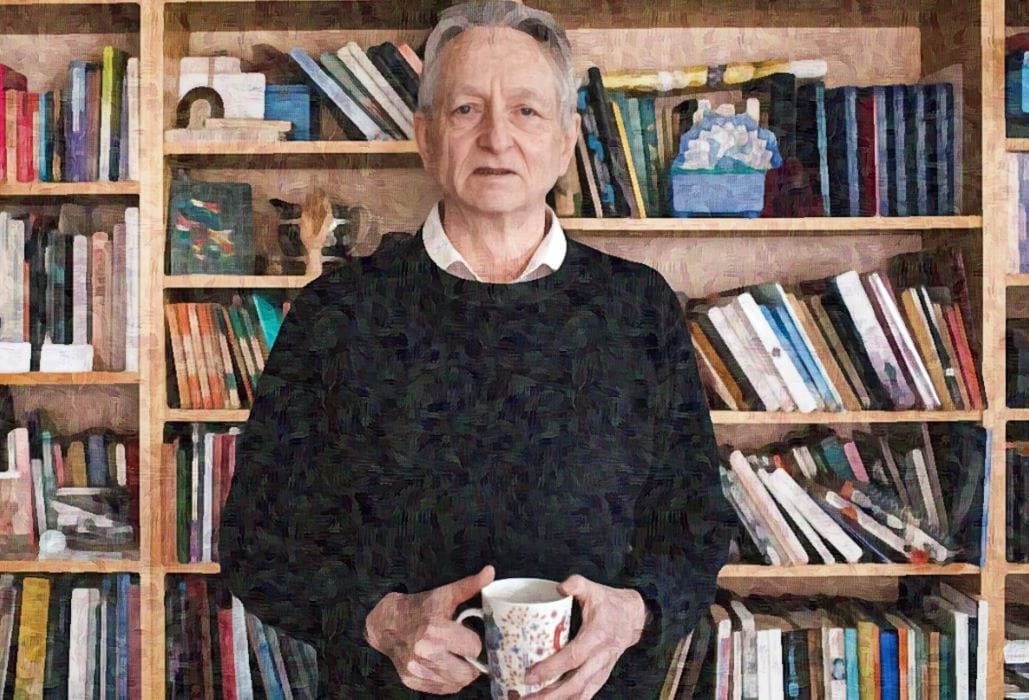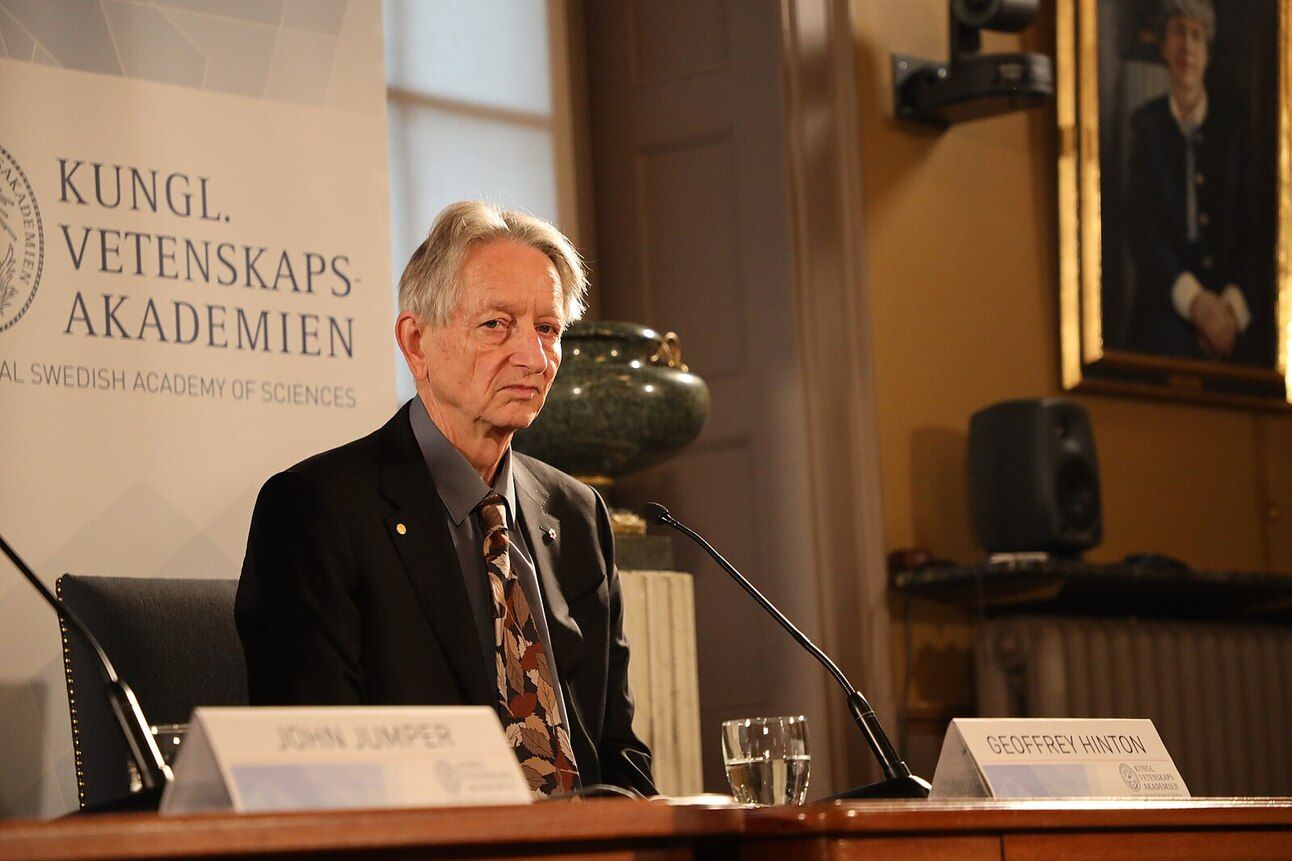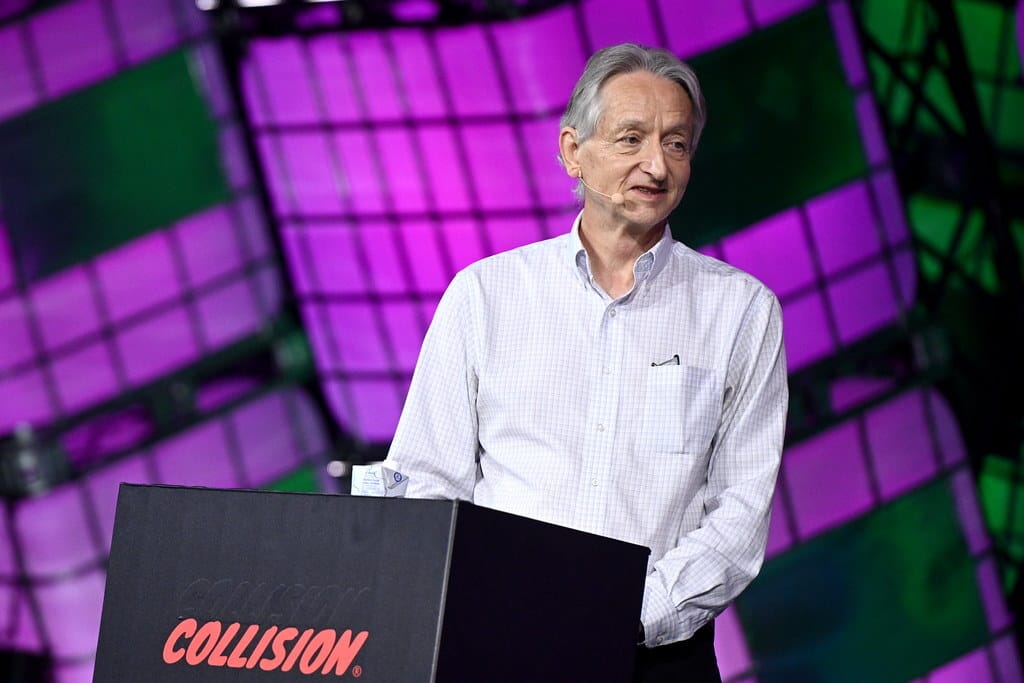The idea of machines thinking, learning, and making decisions once belonged to the realm of science fiction. Yet, Geoffrey Hinton has played a key role in turning that fiction into reality. Dubbed the "Godfather of AI," Hinton has dedicated his career to advancing artificial intelligence, laying the groundwork for the technology that now shapes our world. But his success didn’t come easily. His path was marked by doubt, resistance, and the challenge of convincing others of neural networks’ potential. Despite these hurdles, Hinton’s unwavering dedication has cemented his legacy as a pioneer whose work continues to drive the evolution of AI.

Geoffrey Hinton, Godfather of AI
Background and Context
Born in London, England, in 1947, Geoffrey Hinton grew up in a family deeply rooted in both intellect and curiosity. His father, an entomologist, and his mother, a teacher, fostered an environment rich with questions and learning. The young Geoffrey inherited a curiosity that would eventually lead him to the forefront of a technological revolution. But his path wasn’t paved with certainty.
In school, Geoffrey found solace in the logical clarity of mathematics. Numbers spoke to him in a language clearer than words, and he pursued this passion with fervor. He graduated from King's College, Cambridge, with a Bachelor of Arts in Experimental Psychology in 1970, followed by a Ph.D. in Artificial Intelligence from the University of Edinburgh in 1978. However, his early career wasn’t without its challenges.
The era wasn’t ripe for artificial intelligence. The field was often dismissed as speculative science. Jobs in AI were scarce, and funding even scarcer. But Geoffrey, undeterred, embraced the uncertainty. He moved to the United States, where he joined Carnegie Mellon University. It was a bold choice — a leap into the unknown that would set the stage for everything that followed.
The Challenge or Turning Point
The late 1970s and early '80s were a tough time for AI. Many called it the "AI Winter," a period when enthusiasm dwindled, as did funding. The world wasn’t ready for what Hinton envisioned. Neural networks, the idea that computers could mimic the human brain, was often met with skepticism. Critics saw it as a dead end.
But Geoffrey Hinton wasn’t one to be easily discouraged. He believed in his work, even when others didn’t. It was a lonely road, fraught with doubt and financial instability. He watched his peers abandon the field for more "practical" pursuits. Yet, Hinton persevered, fueled by a profound belief in the potential of neural networks. This was not just a professional challenge but a personal one. He faced the prospect of failure head-on, armed with only his conviction and a steadfast resolve.
This resilience bore fruit when, in the mid-1980s, Hinton co-authored a landmark paper on back-propagation, a method for training neural networks. This algorithm would lay the foundation for future advances in AI. It was a turning point, not just for Hinton but for the entire field of artificial intelligence.
The Journey of Overcoming
Hinton’s journey of overcoming adversity is a testament to his persistence and innovative spirit. With limited resources and widespread skepticism, he continued to refine his ideas. His move to the University of Toronto in 1987 marked a new chapter. There, he found a community that believed in his vision. The Canadian Institute for Advanced Research (CIFAR) supported his work, providing the resources he so desperately needed.
In the years that followed, Hinton's work began to gain traction. His research group at the University of Toronto became a hub for AI development. They explored deep learning, a subset of machine learning based on neural networks, which mimics the human brain’s ability to learn from data. This was revolutionary. The team’s work caught the attention of tech giants, and soon, the world began to take notice.
Hinton's belief that machines could learn like humans was no longer just a theory. It became a reality with practical applications. In 2012, his team achieved a breakthrough in image recognition technology, reducing error rates significantly. This success was the catalyst that propelled deep learning into the mainstream.
Achievements and Impact
Geoffrey Hinton’s contributions to AI are monumental. He is often dubbed one of the "godfathers of AI," a title that reflects his pivotal role in advancing the field. His innovations in deep learning have revolutionized numerous industries — from healthcare, where AI assists in diagnosing diseases, to autonomous vehicles and voice recognition software.
In 2013, Hinton joined Google part-time, where he continued to push the boundaries of AI research. His work has not only garnered accolades but has also inspired countless students and researchers worldwide. In 2018, he was awarded the prestigious Turing Award, often referred to as the "Nobel Prize of Computing," alongside Yann LeCun and Yoshua Bengio, in recognition of their work in deep neural networks.
What sets Hinton apart is not just his technical brilliance but his commitment to the ethical implications of AI. He advocates for responsible AI development, emphasizing the importance of guiding technology with humanity in mind. His humility, despite his achievements, makes him a beloved figure in the scientific community.
Conclusion
Geoffrey Hinton’s journey is one of vision and determination. From the early days of skepticism to standing as a pillar of modern AI, his story is an inspiration to us all. It reminds us that the path to success is rarely straightforward but that true innovation comes from embracing challenges and daring to dream. Hinton’s legacy is not just in his groundbreaking work but in the inspiration he provides to future generations. Through his life, we learn the invaluable lesson: that with vision, resilience, and a bit of courage, we can achieve the extraordinary.
Personal Insights, Quotes, and Lessons
Today, Geoffrey Hinton continues to inspire as both a researcher and an educator. He remains actively involved in AI research, constantly exploring new possibilities. Reflecting on his journey, Hinton often emphasizes the importance of curiosity and resilience. He believes that failures are not setbacks but learning opportunities.
Hinton’s wisdom extends beyond his professional work. He encourages the next generation to pursue their passions with tenacity and to remain steadfast in the face of doubt. As he once said, "The key to success is perseverance through adversity." His story is a testament to the power of persistence and innovation.
Lessons Learned: Geoffrey Hinton - Godfather of AI
The Visionary's Perspective:
Key Lesson: Geoffrey Hinton's success stemmed from his ability to see potential where others saw impossibility. Despite widespread skepticism towards artificial intelligence, he remained committed to exploring neural networks and their capabilities..
Example from Their Life: In the late 1970s and early '80s, when AI was largely dismissed as speculative, Hinton saw an opportunity in neural networks. His work on backpropagation was revolutionary, paving the way for future advances in AI.
How to Apply This: To develop similar foresight and strategic thinking, immerse yourself in emerging fields and stay informed about technological trends. Regularly question the status quo and explore 'what if' scenarios
Action Step: Identify an emerging technology or trend, research its potential impacts, and brainstorm how it could be applied within your field or area of interest.
The Competitive Edge:
Key Lesson: Hinton's resilience and rigorous work ethic enabled him to push through periods of doubt and limited resources, turning challenges into stepping stones.
Example from Their Life: During the "AI Winter," many abandoned AI research, but Hinton persevered. His dedication to refining his ideas despite financial and professional instability eventually led to groundbreaking contributions in AI.
How to Apply This: Cultivate a habit of persistence by setting small, achievable goals that require consistent effort. Develop a routine that prioritizes discipline and productivity.
Action Step: Choose a challenging project you're passionate about, break it into smaller tasks, and commit to working on it daily for the next 30 days without fail.
The Strategic Risk-Taker:
Key Lesson: Hinton's ability to take calculated risks allowed him to pioneer developments in a field fraught with uncertainty. He balanced bold moves with careful, strategic thinking.
Example from Their Life: Moving to the U.S. to work at Carnegie Mellon University was a significant risk, but it opened doors that were essential for his future successes.
How to Apply This: When faced with a decision, weigh the potential risks against the benefits. Develop a habit of assessing both short-term and long-term outcomes before making bold moves.
Action Step: Identify a decision you're currently facing. List the pros and cons, and analyze the potential risks and rewards involved. Make a decision based on a balanced assessment.
The Impact-Driven Leader:
Key Lesson: Geoffrey Hinton's contributions extend beyond his innovations. He prioritizes ethical considerations and has mentored a generation of AI researchers, emphasizing the importance of responsible leadership.
Example from Their Life: At the University of Toronto, Hinton fostered a collaborative environment that contributed significantly to the development of deep learning, impacting the AI community at large.
How to Apply This: Adopt a leadership style that focuses on mentoring and community support. Engage in activities that uplift others and push for ethical standards in your work.
Action Step: Volunteer to mentor someone in your field, sharing your knowledge and experiences to help them grow professionally.
The Adaptive Innovator:
Key Lesson: Hinton's willingness to adapt and embrace change was crucial to his success. He consistently explored new ideas and methodologies, keeping him at the forefront of AI research.
Example from Their Life: Hinton’s move to Canada and his work with CIFAR illustrate his adaptability and openness to new opportunities, leading to significant advancements in AI.
How to Apply This: Stay ahead of change by continuously learning and adapting. Embrace new ideas and be willing to pivot when necessary to stay relevant in your field.
Action Step: Dedicate one hour each week to learning a new skill or exploring a new topic that interests you. This could involve taking an online course, reading a book, or attending a webinar.
By drawing from Geoffrey Hinton’s life experiences, these lessons provide a framework for personal and professional growth. Implementing these strategies can help individuals foster a visionary mindset, build resilience, take informed risks, lead with impact, and remain adaptable in an ever-evolving world.
Thank you for reading this edition of Modeling Winners. If you enjoyed what you read, please consider subscribing. We post inspirational stories throughout the week. The best part? It’s FREE!
If you are already a subscriber, please consider whitelisting our emails so they go directly into your primary inbox.
Want to share this specific article? Copy the link below to share:
What part of the newsletter did you like best?
📖 Reading the Biography 🎧 Listening to the Biography 🧠 Reading the Lessons Learned SectionWant to view the Modeling Winners newsletter as an app on your mobile device? Here’s how!
For iOS:
Open Safari and go to the web page.
Tap the Share button (square with an arrow pointing up).
Scroll down and select "Add to Home Screen."
Rename it if needed, then tap "Add."
The shortcut will now appear like an app on your home screen.
For Android:
Open Chrome and go to the web page.
Tap the three-dot menu (top right corner).
Select "Add to Home screen."
Rename it if needed, then tap "Add."
Choose "Add automatically" or drag it where you want.



